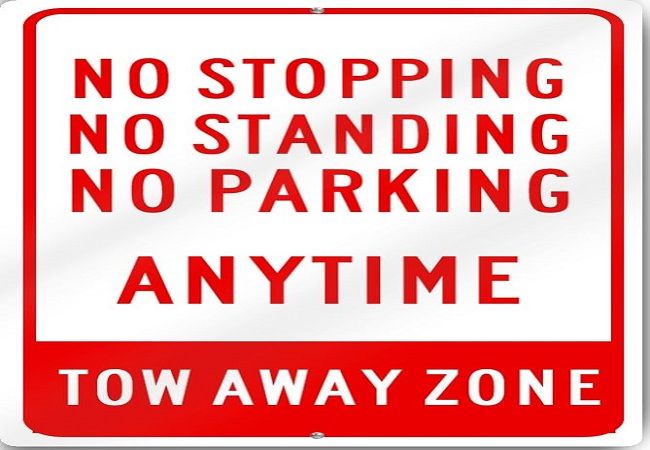In the vibrant tapestry of Australian roadways, understanding the language of road signs is essential for safe and lawful driving. Among the multitude of signs, “No Parking,” “No Stopping,” and “No Standing” signs stand out as crucial directives that every driver must heed. These signs not only ensure orderly traffic flow but also contribute to road safety and the prevention of congestion. Without adherence to the following road signs, theres a possibility of the driver being levied a no-stopping fine and no parking fine.
Overview of Road Signs
Australian road signs serve as silent sentinels, conveying vital information, warnings, and regulations to motorists. They come in various shapes, sizes, and colors, each with a specific purpose. From the familiar speed limit signs to the more nuanced “No Parking”, “No Stopping” and “No Standing” signs, these visual cues guide us through our journeys.
Read More – Navigating Speeding Fines in Australia : Laws, Penalties, and More.
No Parking Signs
“No Parking” signs, indicated by a red circle with a red diagonal line across a black P, signify areas where parking is strictly prohibited. Parking in such zones can result in fines.
No Standing Signs
“No Standing” signs, featuring a red circle with a red diagonal line across a black S, denote areas where you can’t stop your vehicle, even momentarily. Violating these signs can lead to fines. You can legally stop in a no-standing zone for up to two minutes for the purposes of either picking up or dropping off passengers or goods, but you must also stay within three metres of your vehicle.
No Stopping Signs
“No Stopping” signs, recognized by a red circle with a red diagonal line across a black arrow, signify areas where vehicles cannot stop, not even for a brief moment. Ignoring these signs can result in fines. Fines vary from council to council.
Read More – Navigating the Demerit Point System in Australia.
Differences Between the Signs
Understanding the distinctions between these signs is crucial. “No Parking” allows you to stop briefly to drop off or pick up passengers, while “No Stopping” and “No Standing” mean no stopping at all, even for a few seconds.
Consequences of Violating These Signs
Ignoring these signs can lead to fines, with “No Stopping” fines often being the highest. It’s vital to adhere to them to avoid penalties and maintain road safety.
Additional Road Signs
While “No Parking”, “No Stopping” and “No Standing” signs are vital, there are numerous other road signs in Australia. Familiarizing yourself with these signs is essential for safe and lawful driving.
Local Variations
Local variations in road signs exist, so it’s essential to be aware of regional differences, especially when travelling to different states or territories.
Read More – How to Transfer Your Vehicle Registration in Australia.
Conclusion
In the intricate web of Australian road signs, “No Parking”, “No Stopping” and “No Standing” signs are beacons of order and safety. Comprehending their meaning and obeying their directives is not only a legal obligation but also a shared responsibility that ensures the smooth and secure flow of traffic on our roads. Remember, adhering to these signs is not just about avoiding “No Parking” or “No Stopping” fines; it’s about keeping our journeys safer for everyone on the road.
FAQs
1. What is the primary purpose of road signs like “No Parking”, “No Standing” and “No Stopping”?
The primary purpose of road signs like “No Parking,” “No Standing,” and “No Stopping” is to regulate and ensure the smooth flow of traffic, prevent congestion, and enhance road safety.
2. How can drivers easily identify these different signs, and what are the visual cues that distinguish them?
Drivers can identify these signs by their distinct symbols and colors. “No Parking” has a red circle with a red diagonal line over a black “P.” “No Standing” features a similar red circle and line over a black “S.” “No Stopping” showcases a red circle with a red diagonal line across a black arrow.
3. How can drivers stay informed about local traffic regulations and the specific meanings of road signs in their area?
Staying informed about local traffic regulations and the meanings of road signs can be done by consulting the local road authority’s resources, studying the road code, and using educational materials provided by the government. Online sources and driving schools are also valuable.
4. Are there any misconceptions or common mistakes that drivers often make regarding these signs, and how can they avoid them?
Common mistakes include confusing the meanings of these signs, such as thinking “No Parking” allows brief stops. Drivers should carefully read and understand each sign’s specific instructions, noting any time limits or additional information.
5. Can you provide real-life examples of locations or scenarios where each of these signs is commonly used?
“No Parking” signs are commonly found in urban areas, prohibiting parking during specified hours. “No Standing” signs often appear at bus stops or taxi ranks, where halting is not allowed. “No Stopping” signs are frequently seen in clearways, ensuring continuous traffic flow and prohibiting stops.

Comments
New Comment